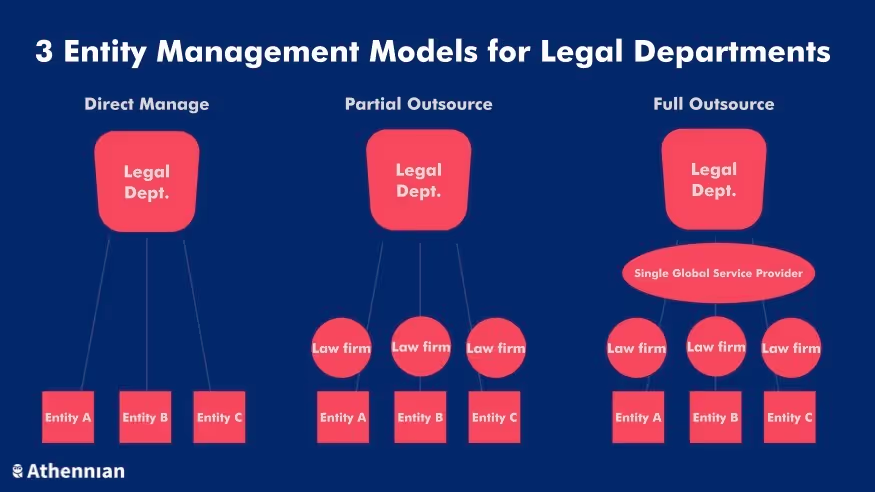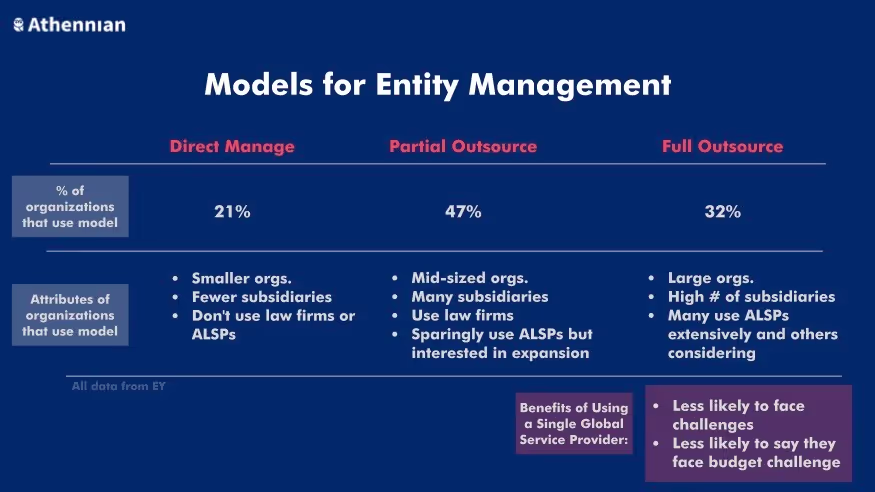The complexity and effort to maintain global subsidiary entities that are in “good standing” and “deal ready” becomes significant as the corporate structure grows and expands across borders. There are three main configurations that legal departments use to manage their subsidiary entities: direct manage, partially outsourced, or fully outsourced. The appropriate configuration depends largely on the volume and complexity of your corporate structure.

Regardless of the service delivery model your organization proceeds with, the key to a successful entity management program is alignment and adoption of the entity management software platform by your internal legal, tax, and finance teams.
According to a recent EY report, 96% of legal departments report issues with their legal entity management software. 72% find it difficult to keep systems updated, and 62% found it challenging to track governance activity statuses.

These issues arise from two related challenges: “ineffective implementation and an organization’s dependency on older systems [Diligent Entities, GEMS, Secretariat, hCue, EnGlobe, etc.] that lack the user interaction and interface of modern technology.”
Most legal entity management software installed in large legal departments was built in the 1990s and suffers from poor user experience and data architecture that creates friction into user adoption. Indeed, James Stantonian, a leading user experience designer, provided an eye-opening review of the realities of using outdated entity management software:
We also learned that the system [Diligent Entities, formerly Blueprint] was so complex (a product of its meandering and ad-hoc development) that administrators were afraid of letting people add or edit data for fear it would compromise it, and thus became human bottlenecks.
Learn more about how Athennian can help you scale business entity management? Book a demo here.




.svg)








-p-500.webp)
-p-500.webp)
-p-500.webp)
.webp)
